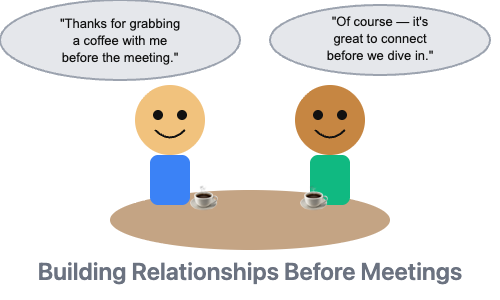You’re leading a meeting with participants from around the world, and as the discussion unfolds, you notice some people are silent while others debate passionately. This leaves you wondering if cultural differences are making it harder for everyone to contribute or feel respected. The real challenge isn’t just about avoiding offense; it’s about creating an environment where all voices can be heard and valued, no matter their background. As highlighted in the HBR Guide to Making Every Meeting Matter, Rebecca Knight suggests effective meetings require practical strategies to bridge cultural gaps in communication, authority, and conflict. In this lesson, you’ll learn how to recognize and adapt to cultural variations, set clear expectations, and build trust so your meetings are productive, inclusive, and truly global.
Cultural differences can show up in many ways during meetings. Here are some common dimensions and how they might affect participation:
The key to showing cultural sensitivity starts with awareness of the variations that exist among cultures and understanding how they play out in professional settings. There are differences in aspects such as seating arrangements, how quickly people transition from socializing to business, and how comfortable they are with giving feedback or engaging in open debate during meetings. For instance, in hierarchical cultures, junior members might never speak unless directly asked, while in egalitarian cultures, everyone expects to contribute freely regardless of rank.
It’s recommended to learn as much as you can about the people and regions you're collaborating with so you can adjust your management style in small but meaningful ways. This means studying a country's customs and professional practices while becoming an expert observer of others. This is a team effort—provide your colleagues with reading material on cultural differences and encourage them to "think about how their behavior is viewed so they can make adjustments too."

"Getting to know the personalities on your team is sound management practice in any culture, but it becomes absolutely essential when your team spans different countries." This isn't about creating cultural profiles—it's about understanding how each person's background influences their meeting participation and what support they might need to contribute effectively.
Consider a team member from a hierarchical culture who's reluctant to provide feedback to a senior colleague. If you want them to speak up in a meeting, you need to talk with them beforehand and strategize on how they can adapt their behavior.
Forging bonds and fostering trust among team members before diving into business discussions is essential. Investing time upfront to build emotional connections, such as sharing meals or talking over drinks, gives team members opportunities to get to know each other beyond their professional roles. This relationship building helps create psychological safety that transcends cultural barriers. When people genuinely know and trust each other, many cultural differences that appear in the workplace matter far less.
Additionally, learning about how different cultures handle disagreements helps you navigate conflict more effectively. In some countries, saying "I disagree" is seen as very aggressive and could damage relationships, whereas in others, disagreement is viewed as an opportunity to strengthen relationships through intellectual engagement.
Creating protocols and establishing norms at the beginning of your meetings gives everyone a clear framework for participation while respecting cultural diversity. It’s important to clearly communicate your expectations and how meetings will be conducted. This clarity helps some participants feel comfortable stepping outside their usual cultural norms, while also ensuring that others do not dominate the discussion based on their own cultural habits.
Take punctuality as an example. Some of your colleagues might come from cultures where time is fluid and starting 15 minutes late is normal, but you need meetings to start and end on schedule for practical reasons. You need to demonstrate that you understand different cultural behaviors while explaining why punctuality is critical for your team's success. "Structure and protocol can override or supersede cultural norms" when necessary. If you want to ensure participation in brainstorming sessions but some colleagues come from reticent cultures, institute rules that everyone follows—such as asking "everyone to go around the room and spend two minutes describing their point of view on a particular problem."
Before meetings, ask team members to email their ideas and thoughts, which can then be grouped by theme and shared when everyone is together. This approach focuses the discussion on ideas rather than individuals, making it less personal and more comfortable for those from cultures that tend to avoid open conflict. Here's how this might look in practice:
- Jessica: I noticed during our product review meeting that you seemed to have concerns when Ryan was discussing the testing timeline, but you didn't voice them. Was there something on your mind?
- Milo: Well, yes, but I didn't want to challenge Ryan directly in front of everyone. In my culture, that would be disrespectful.
- Jessica: I understand completely. How would you feel about sharing your concerns in writing before our next meeting? I can present them as discussion points without attributing them to anyone specific.
- Milo: That would be much better. I have serious concerns about the testing protocol, but I need a way to express them without seeming confrontational.
- Jessica: Perfect. Send me your thoughts by Thursday, and I'll incorporate them into our agenda as "points to consider." That way, we can discuss the ideas themselves rather than who raised them.
- Milo: Thank you. This makes it much easier for me to contribute meaningfully without violating my cultural values about respect and hierarchy.
